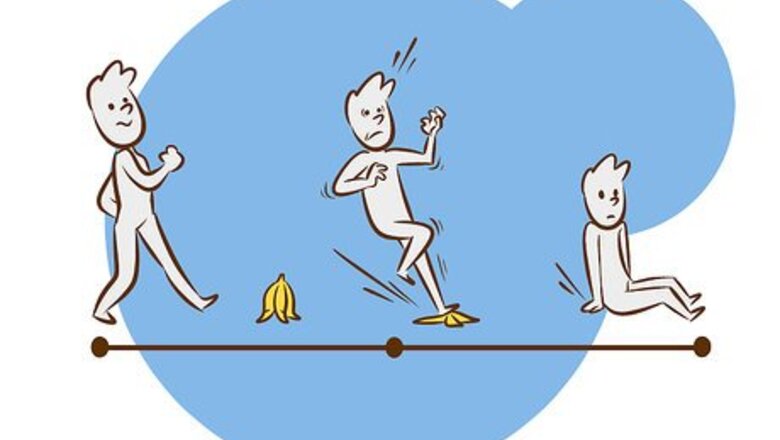
views
Story Work
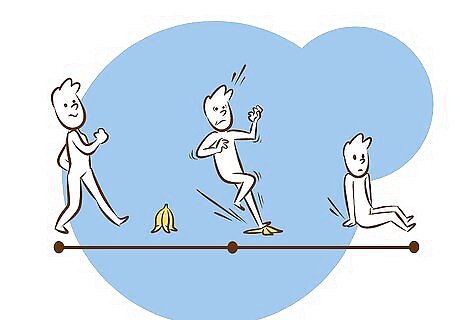
Establish a timeline. Establishing the parameters for when and where your story takes place, and deciding in which order the events of the story happen chronologically, is the best way to organize your story so you can begin bringing it to life. If your story isn't completely linear (e.g. there are flashbacks, flash forwards, shifting perspectives, alternate outcomes, multiple timelines, time travel, and so on), you can still create a narrative timeline. Make a list of the main events of the story in the order they will be told. This is how they will appear on screen. If you’re storyboarding for a commercial, establish what scenes will occur and in what order.

Identify the key scenes in your story. A storyboard is meant to give its viewer the gist of how the story will translate to film. The point isn't to try to recreate the entire experience in a flip book, but to demonstrate important key parts that will draw the viewer in. Think your story through and brainstorm a list of the key moments that you want to illustrate on your storyboard. Pick scenes that show the plot developing from start to finish. Turning points are important to show. Any time there’s a plot twist or an important change, include it in the storyboard to move the story along. You may also want to depict changes in setting. If the story begins in one city and moves to another, make sure that will be clear in your illustrations. If you’re storyboarding for a commercial, the process is no different: pick key images that will represent the flow and direction of the film from start to finish. As a general guideline, keep in mind that for a typical 30-second commercial, a storyboard should have no more than 15 frames. Factor in two seconds per frame on average.

Decide how detailed to get. A storyboard can be incredibly detailed, with illustrations depicting every shot. If you’re in the preliminary stages of a feature-length film, you have too much ground to cover to get this detailed just now. However, you might eventually want to break the film down into individual scenes, with a separate storyboard for each one. This allows you to create a very detailed representation of the progression of individual scenes and is helpful when it comes to staying organized during film-making. If you're working on a film and breaking it down shot by shot, create what's called a shot list. For each shot on the list, you'll need to think about the shot's composition and other details involving how it will actually be filmed. Remember that the point of the storyboard is to provide visual clarity and keep everyone on the same page. It’s not supposed to be a work of art in and of itself. Take a practical view when it comes to the level of detail you choose for your storyboard. You don’t want your viewer to get lost in trying to interpret your illustrations instead of seeing the bigger picture. A good storyboard will be easily understood by anyone viewing it. Potentially, a director, cameraman, scene selector, or even a prop specialist (just to name a few) may refer to the storyboard for reference, guidance and direction.
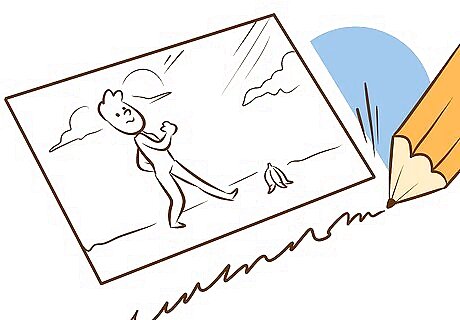
Write a description of what each cell will show. Now that you know what main scenes you want to show, think about how to depict the action in each illustration. Go down your list of scenes and write a description of the most important elements of each one. This will help you determine what exactly to draw for your storyboard. For example, you might want to have a cell that depicts a conversation between two main characters. What needs to be conveyed in this image? Are the characters fighting, smiling, or moving toward a destination? Some sort of action should take place in each drawing. Take the setting into account as well. Is it important to have a certain view in the background behind the characters?
Design
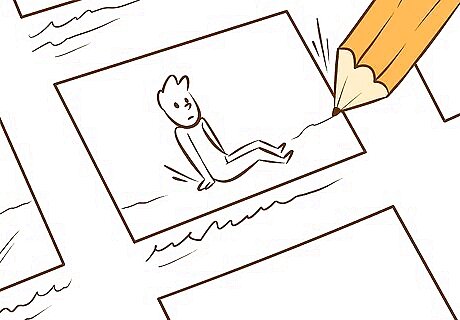
Decide what medium to use for your template. You can draw a basic storyboard template by hand, simply dividing a posterboard into empty frames of the same size using a pencil and a straightedge. The setup should look similar to that of a comic book, with rows of square cells that show how the scene will look on a screen. If you prefer, you can use Adobe Illustrator, storyboardthat.com, Microsoft PowerPoint, Amazon's Storyteller, or inDesign to create a storyboard template in vertical or horizontal format. The cell sizes should be drawn in the same aspect ratio as the finished video, such as 4:3 for a TV screen or 16:9 for a feature film screen. You can purchase special thumbnail sheets with these dimensions. A storyboard template for advertising should be comprised of rectangular frames into which you insert the visuals. If you want to include captions, make sure there’s space where you can write in video descriptions. There should also be a column for the audio, which is where you include the dialogue and sounds or music. If you find yourself storyboarding for more than one project, it helps to have a good Wacom™ tablet, so you can board directly into Photoshop. If you don’t want to design the images, you can hire a storyboard artist to provide the drawings. You will describe what goes on each frame and give the artist a written script to work from. He or she will provide you with either black and white or color illustrated frames that you can scan into the board in sequential order.
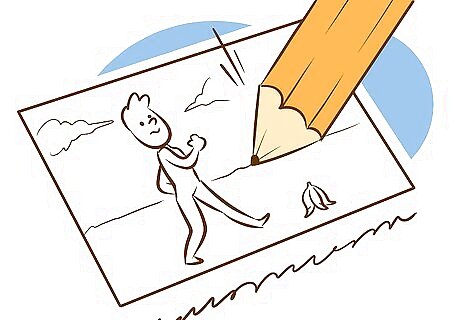
Sketch your thumbnails. Start bringing the scenes to life by drawing the sketches you mapped out into the template you designed. This is just your rough draft, so don’t try to make it perfect. As you sketch each scene, tinker with the following elements, erasing and redrawing as often as necessary: Composition (lighting, foreground/background, color palette, etc.) Angle from which the camera is shooting (high or low) The type of shot (wide shots, close-ups, over-the-shoulder shots, tracking shots, etc.) Props (objects in the frame) Actors (people, animals, cartoon talking couch, etc.: anything that can act rather than be acted upon) Special effects

Add other important information. Next to or below each cell, fill in your description of what’s happening in the scene. Include dialogue that will take place. Add information about the length of time the shot will take. Finally, number the cells so they’re easy to reference when you discuss your storyboard with others.
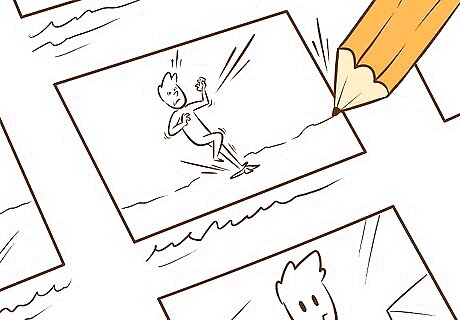
Finalize the storyboard. Once you have identified the key points of the subject and worked out a design for each frame, review your work and make final changes. Be sure that each cell portrays the action you want it to portray. Tweak the descriptions and dialogue if necessary. It’s a good idea to have someone else review the storyboard to make sure it flows well and isn’t confusing. Consider adding color. If you’re creating an advertising storyboard, this will help your ideas pop. Remember that it’s not necessarily important that the drawings look realistic or perfect. Depending on the viewing audience, simple stick figures might suffice. In most cases, storyboards don't need to be perfect, they only need to make sense to your team.
Fine-Tuning

Think in three-point perspective. While your storyboard illustrations don't need to look like they were created by a professional artist, there are a few artists' tricks you can use to make your images look more like movie scenes. This isn't mandatory, but it can help the people you're working with visualize the shot more clearly. Instead of drawing all of your characters as though they were standing on the same horizontal line, put them in perspective. Have some standing a little further from the camera and some standing closer. The ones standing further from the camera should appear smaller, with their feet higher up on the page, and the ones standing closer should appear larger, with their feet lower on the page. When it's time to translate the storyboard to film, you'll have a much better idea of how to direct the shot.

Have motivations for your cuts. As you storyboard your film, think about your reasons for making each cut to a new shot. Advancing the story is about more than just hopping to the next plot point; you need to give a reason for why your characters do what they do. Storyboarding the motivations for your cuts will help you figure out how to build tension and keep the story moving when it comes to making the film. For example, if you want to cut from one room to another, have a character in the first room look toward the door because they hear a noise. This helps the story's continuity and keeps the viewer engaged.

Let your storyboard morph as you go. Your storyboard can be an extraordinary tool to have at your disposal when you're setting up your shots and directing your film. However, relying heavily on your storyboard might end up being too confining. As you make your film, you're bound to come across ideas for shots you didn't think of before. Allow yourself to drift from the board, or at least revise it, so that the filmmaking process is a bit more organic. Remember to accept others' input as you go along, especially if you're working with a talented film crew. A storyboard is meant to be edited and changed. It can often be improved by ideas you might not have thought up on your own. Most film directors have a different style when it comes to storyboarding. Some map out every last detail, while others use it as a loose guide.

















Comments
0 comment